FULL GUIDE FOR VISITING CHANGDEOKGUNG PALACE IN SEOUL

Changdeokgung Palace (창덕궁), a UNESCO World Heritage Site, is one of the 5 main palaces located in Seoul.
This Secondary Palace, built in the early 15th century by Taejong (태종) the 3rd King of the Joseon Dynasty, is a group of official and residential buildings with a secret garden called Biwon or Huwon.
The Secret Garden is home to a pretty lotus pond and various pavilions where the royal family came to relax surrounded by 56,000 varieties of trees and plants. The calm of the place is surprising, yet you are in the heart of Seoul!
When visiting Changdeokgung Palace, we highly recommend combining it with Changgyeonggung, which is located right beside it. Changgyeonggung is actually our favorite palace in Seoul, you can check why in our blog post here.
Out of 5 main palaces, Gyeongbokgung located in Gwanghwamun is actually the most visited one. You can find more info about Gyeongbokgung here.
Useful information about Changdeokgung
How to get there?
- Address: 99 Yulgok-ro, Waryong-dong, Jongno-gu, Seoul (서울 종로구 율곡로 99)
- By Subway: Line 3, Anguk station, exit 3. This is the fastest and most efficient way to get around Seoul.
- By Bus: Since it is in the city center, there is plenty to choose from on the bus numbers passing in front of the palace. Depending on your departure location, you can take the following buses: 109, 151, 162, 171, 172, 272 or 710.
Other information
- Opening hours: Changdeokgung is closed every Monday. The opening hours are based on the time of year: February to May: 9 a.m. – 6 p.m. / June to August: 9 a.m. – 6.30 p.m. / September and October: 9 a.m. – 6 p.m. / November to January: 9 a.m. – 5.30 p.m.
- Admission: Adults 3,000 won / Children 1,500 won
- Website: http://www.cdg.go.kr/eng/
Our recommendations
- If you wear a Hanbok (traditional Korean costume) you can enter for free. You can rent a Hanbok at low price here. Besides giving you free access to all palaces, wearing Hanbok is super fun and will give you plenty of photo opportunities.
- To make the most of these five palaces, the city of Seoul has implemented a pass. This is a small notebook with tear-off coupons. To purchase it, simply go to the cash desk at one of these five locations and request a Combination ticket for palaces. It is 10,000 won (5,000 won for children). Which is cheaper than paying for each visit. This pass is valid for three months.
- Changdeokgung Palace is connected to Changgyeonggung, hence we recommend to visit both palaces in 1 go. Once you enter Changdeokgung, there will be another ticket counter at the back of the Palace to enter Changgyeonggung.
Moonlight Tour
Every year it is possible to do a night tour of Chandeokgung Palace. This usually takes place over several weeks, in April, May or September, or October. Check out their website to see if the Moonlight tours are available.
The visit lasts two hours, there are sometimes two possible slots in the evening. It is however necessary to reserve in advance. The cost is KRW 30,000.
Klook.comA bit of history about Changdeokgung
Changdeokgung Palace was built from 1405, just a few years after the then main palace, Gyeongbokgung, was completed and under the leadership of the same king, Taejong. It was then a secondary palace, only 1 km east of Gyeongbokgung.
Like all the other main palaces in Seoul, Changdeokgung also experienced lots of turmoil in its past. In 1997 it will finally be designated “World Heritage of Humanity” by UNESCO.
In summary, here are the main dates to remember:
- 1405-1412: construction of Changdeokgung
- 1406: addition of the “secret garden”, called Huwon (후원)
- 1592: This is the period of the Japanese invasions (Imjin War). The palace is destroyed by fire.
- 1610: Changdeokgung is rebuilt and becomes the main palace instead of Gyeongbokgung palace (also burnt down but which will remain abandoned for two centuries).
- 1623: Another fire destroyed the palace, following the coup d’etat of King Injo.
- 1647: after 25 years, the palace is finally rebuilt. Most of the structures then remain faithful to the original model.
- 1907: after 260 years without major incident, a major fire breaks out in the heart of the palace.
- 1990-1999: restoration work is carried out at Changdeokgung Palace.
Despite the palace being destroyed multiple times, Changdeokgung is one of the best-preserved Palaces. This is why UNESCO listed Changdeokgung Palace in 1997, together with the Huwon Garden, including an area of 58 hectares. It is praised for its exceptional architecture and design in harmony with the natural landscape of the region.
Best Things to See at Changdeokgung Palace
1. Donhwamun Gate
Donhwamun is the main gate and marks the entrance into Changdeokgung. The original version was built in 1412, but it was destroyed by Japanese invasions in 1592. It was rebuilt along with most of the palace by 1607. A process that will take two years. In the process of becoming the main palace, the gate was widened and is today the most imposing of all the main gates of the 5 royal palaces.
The door follows the codes of Korean architecture, using a two-story roof. According to data, in 1413 there was a 7.5-ton bronze bell hanging here, but it was later removed. The cobblestones that are walked under the door, on the other hand, were added during the renovation of the palace at the end of the 19th century.
Once in the courtyard behind the gate, what we immediately noticed were the tall trees lined up to the left, which were stunning during spring.
2. Gwolnaegaksa
Gwolnaegaksa is a complex of government offices, built on the grounds of the palace at the end of the 19th century. It was in these offices that the Emperor chose to manage political and royal family affairs.
You can see the royal infirmary (Naeuiwon), an office of special advisers (Hongmungwan), the publications office (Geomseocheong), a royal library (Gyujanggak) etc.
During the Japanese occupation of Korea in the early 20th century, the Japanese wanted to make room for a wide road. They then moved the collection of books from the Royal Library (Gyujanggak) to that of Seoul National University (where they still are) and destroyed the building.
The current version in Changdeokgung Palace, therefore, dates from 2005, when the process of restoring the Gwolnaegaksa complex began. Gwolnaegaksa is separated from the whole palace by a channel serving to carry water from the spring of the Ongnyucheon area (called the Jade Stream), located in the secret garden.
The reason for this channel, among other things, is due to the belief that entering the palace through flowing water was auspicious and would avoid any damage.
3. Seonwonjeon Hall
The Seonwonjeon Hall in Changdeokgung Palace stored portraits of ancient kings. Ancestral rites were also performed in this hall. Unfortunately, these portraits were destroyed during the Korean War (1950-1953).
4. Injeongmun Gate
Passing through the Jinseonmun gate, which faces a stone bridge, you will arrive to a courtyard with a stone paved path. Opposite is the Sukjangmun Gate, which leads to the rest of the palace. On the side is the Injeongmun Gate in the middle, the main entrance to the courtyard surrounding the throne room of Changdeokgung Palace.
The Injeongmun Gate was built in 1418. It Served as the main gate of the Injeongjeon Throne Hall, , during the reign of King Taejon (3rd King of the Joseon Dynasty). The gate was later damaged by the Imjin War (Japanese invasion of Korea in 1592). In 1744, it was destroyed again by fire and rebuilt again the following year.
The Injeongmun Gate has served as the venue for several crowning ceremonies of kings, the succession of the prince’s throne, and many other national affairs.
5. Injeongmun throne room
The Injeongjeon Hall is the main hall of Changdeokgung Palace, thus serving as the throne room. It was used by the king and officials for conferences but also to receive visitors, ambassadors and other foreign envoys when they arrived at the palace.
Originally built in 1405, the building has been destroyed twice by fire, the first time in 1592. It was again struck by fire in 1804, during the reign of Emperor Sunjo. However, it has always been rebuilt.
6. Seonjeongjeon Hall
The building was built at the start of the Joseon Dynasty. This room, next to the throne room, served as a place for meetings and seminars. Every day, the king discussed state affairs there with his senior officials. Seongjeongjeon was first destroyed during the Japanese invasions (1592-1598) and a second time during the Injo coup d’etat in 1623.
The surroundings of the building serve as storage and offices for secretaries. Attached to the hall, a covered hallway leads to the Seonjeongmun Gate. This corridor attests to the use of Seonjeongjeon at royal funerals.
7. Huijeongdang Hall
The women of the royal court worked at the Huijeongdang Hall. Later on, as the hall was larger, it replaced Seonjeongjeon in handling state affairs and discussing political issues.
The original building was unfortunately destroyed by fire, this time in 1917. During its reconstruction in 1920 the Japanese government used materials from the king’s residence at Gyeongbokgung.
In this case, the reconstructed building is completely different from the original. The exterior of the building resembles traditional Korean architecture, but the interior is more Western-style.
The eastern and western architecture of the new interior featured many amenities uncommon in early 19th-century architecture in Korea. These amenities included a waiting room for vehicles up front, glass windows, wood floors, electricity, lights, chandelier, bathrooms, and even curtains.
8. Daejojeon hall
This is a Queen’s Residence, which is located just behind the King’s Residence (Huijeongdang Hall). In the center of the Daejojeon, a small terrace is called “Woldae”. On this terrace every man who visited a queen performed a greeting or waited for her to come.
Although it is the queen’s residence, it is here that several kings of the dynasty (Seongjong, Injo, Hyeonjong, Cheoljong or Sunjong to name a few) died.
The rear had a terraced garden, with doors up to the famous secret garden. There is also an astonishing brick fireplace, covered by slabs sculpted at regular intervals. It was an area so pleasant to walk around as there was no one there, but it was also aesthetically charming, with trees lining the buildings, providing some welcome greenery.
9. Seongjeonggak Hall
Seongjeonggak is located next to the king and queen’s residence. This building is also called “Yakbang”, which can be translated as “pharmacy”. In short, it was a bit like a personal clinic belonging to the royal family. This is where the royal court doctors took care of the king and his family.
Each doctor had his specialization. Some were in charge of surgery and others in obstetrics. There were also female doctors who only treated women of higher status.
They were on duty day and night in turn. They kept all kinds of herbs in Seongjeonggak all, from all over the country. If today these herbs and instruments used for the preparation of medicines have all disappeared, there are still some stone mortars to testify to the history of these places.
10. The Secret Garden
If there is 1 thing which we really recommend to do in Changdeokgung, it would be the Secret Garden!
There is an extra cost to visit the Secret Garden. Covering an area of 32 hectares behind Changdeokgung Palace, the magnificent garden occupies about 60% of the palace’s total area.
It was a garden for the exclusive use of the royal family and the women living in the Palace. It contains a lotus pond, pavilions and multiple lawns, trees and flowers. There are over 26,000 specimens of over 100 different species. Many of the trees in the garden are now over 300 years old.
Huwon, the official name of the garden, was used by the king for resting, but also for organizing a variety of ceremonies, banquets, parties, archery tournaments and fireworks. The design of the garden blends harmoniously with the surrounding nature.
The garden is suited to the topography, geography and ridges of Mountain. It is a prime example of the gardening design of the Joseon dynasty.
Why “secret” garden?
Because it is reserved for the private use of the king, people used to call the garden “Geumwon”, the “forbidden” garden. Indeed, even senior officials were not allowed to enter the garden without permission from the sovereign. Huwon Garden also has other names such as “Naewon” (inner garden) but nowadays it is mostly “Biwon”, which translates to secret garden, which remains in use.
Other things to see near Changdeokgung
5 Grand Palaces of Seoul

Seoul has 5 Grand Palaces in total, you can discover them in our full post here.
Ikseong-dong, the cutest neighborhood in Seoul

It’s a neighborhood with the cutest little alleys with many Hanoks, trendy boutiques, amazing cafes, and great restaurants. Some call Ikseon-Dong the hipster place of Seoul. It is certainly one of the trendiest and most up-and-coming neighborhoods in Seoul. We simply love it!
READ: FULL GUIDE TO IKSEON DONG IN SEOUL
Insadong, to spend a pleasant afternoon

Insa-dong (인사동) is located in the middle of the city of Seoul. It is an important place where old traditional and precious objects are exposed. The district is composed of a main street called Insadong-gil, which connects many little alleys full of restaurants, cafes, Hanok and many shops.
Here, we’ve listed 8 recommendations of top things to do in Insadong.
Ihwa Mural Village

Ihwa Mural Village is a unique place in Seoul, completely devoted to Street Art. Located next to Naksan Park and not far from one of the largest art school in Seoul, the walls of Ihwa village have been completely taken over by artists over the years. Street Art in Seoul is filled with joy and color. Everything is fresh, delicate and so cute, a real pleasure for the eyes.
Check out our full post here for a visit of Ihwa Mural Village
In conclusion
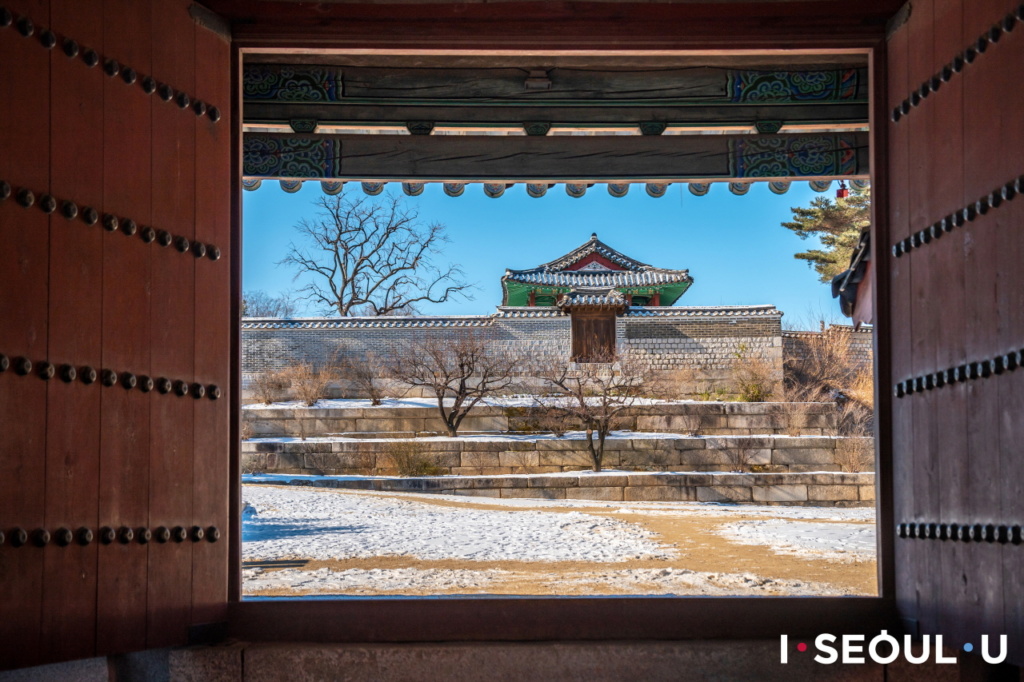
Changdeokgung Palace is a beautiful place to visit in South Korea.. For us, Changdeokgung Palace has more detailed compared to other 5 main Palaces in Seoul.
What makes this palace so special, is actually its Secret Garden. This is by far our favorite place in Changdeokgung.
If you visit Changdeokgung, we also highly recommend to combine the visit with Changgyeonggung, which is our favorite palace in Korea.
If you have any questions about Changdeokgung, don’t hesitate to ask us! And for people who have visited the palace before, let us know about your experience in the comments below!
If you stay in Seoul for a few days, we recommend the visit of the 5 main Grand Palaces. More information about that here.
We lived in Seoul for 3 years and loved exploring all these beautiful places in Korea. There are many posts about Korea in this blog, you can find them all here.
HAPPY TRAVELING!
Photo credit: Photo by Seoul Metropolitan Government/Penta Press
Links to related articles
- SOUTH KOREA: some of the most amazing things to do in South Korea
- DEOKSUGUNG PALACE, the most westernized one in Seoul
- JEONJU: the cutest hanok village in Korea
- WHY visiting South Korea
- IHWA MURAL VILLAGE: a visit off the beaten path in Seoul
- JEJU: the best island escape from Seoul
- WOLMIDO: the perfect place to escape the busy Seoul
- INSADONG: a must-see area of Seoul

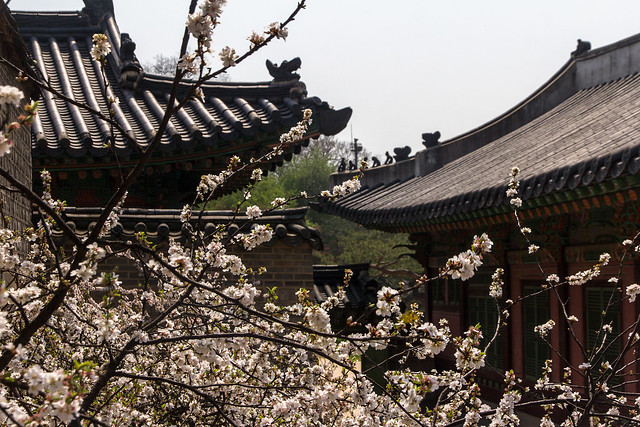




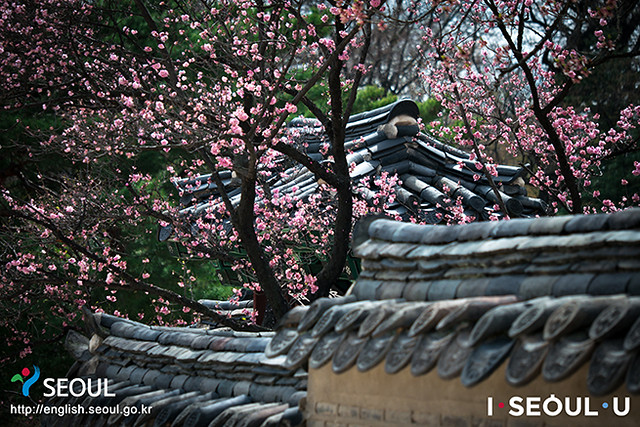
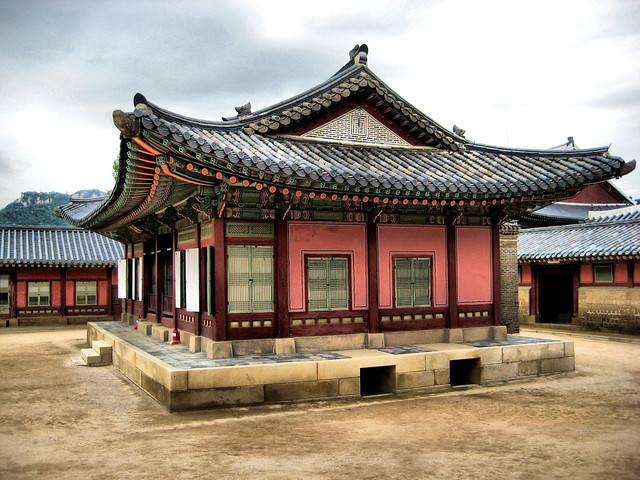
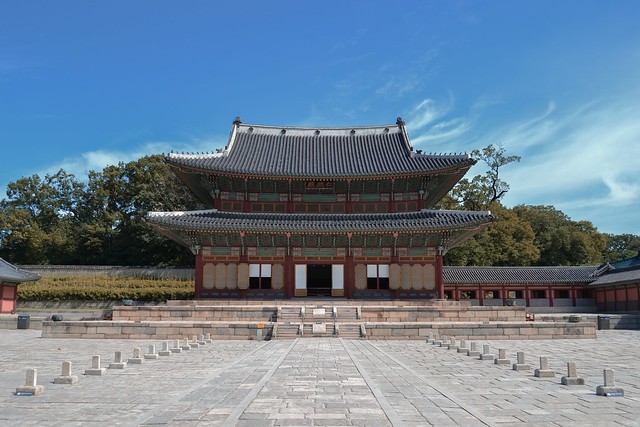
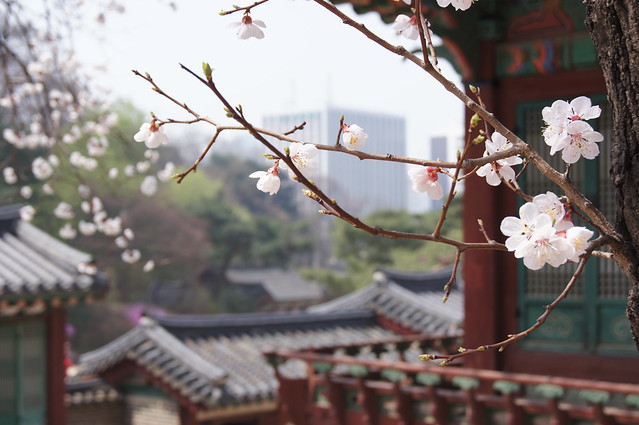









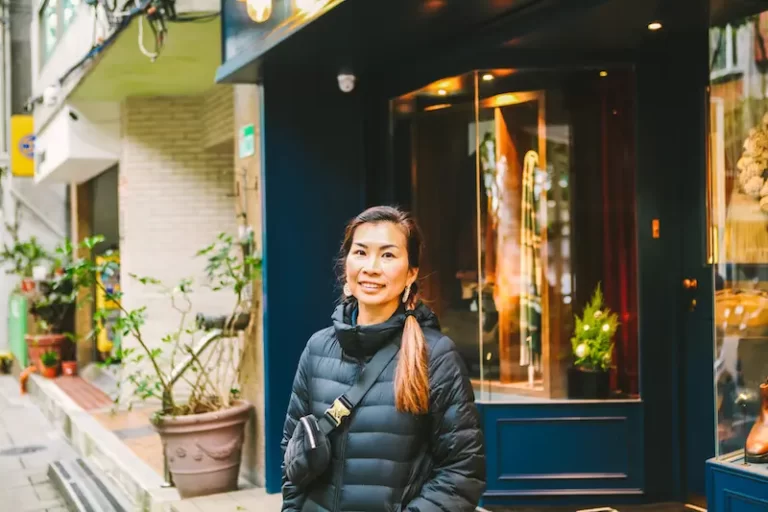
Hello, I love this article about Changdeokgung Palace & Huwon Secret Garden but… How can I make a reservation in advance? When I try to open their page it says “www.cdg.go.kr took too long to respond”, both from my laptop and phone… Is there any way to do it?
Hi Pralinka, their website is working well on my side (http://www.cdg.go.kr/eng/). Can you check again?